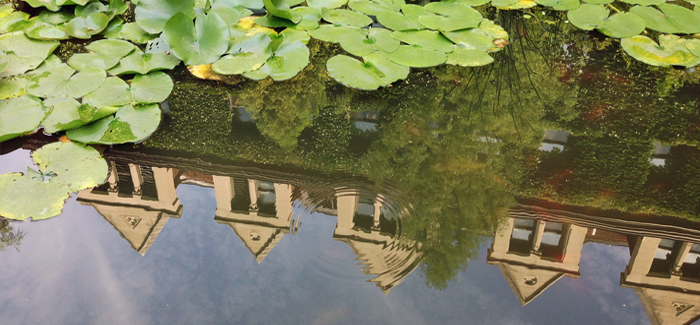
Money trees
The University’s botanic garden is going digital.
Nature’s beauty, environmentalists might say, is priceless. The University of Chicago disagrees. In 2011 they brought in Bartlett Tree Experts to conduct an inventory of all the trees and ornamentals on the University’s 215-acre campus, which was certified as a botanic garden in 1996. The collection, at the time of writing, is appraised at $8,461,521.12.
“Everything has value,” says Richard Bumstead, associate director of campus environment. For trees, “it’s a complicated process, determined by species, size, condition, and location.”
For example, a freshly planted tree of heaven near Hull Gate is estimated at $756.99, while a fully grown 28-inch-thick specimen behind the Mott building on 60th and Woodlawn is $7,418.51.
“If a tree is in an urban area in an open lawn and providing a lot of shade, in a really healthy condition, it’ll have a much higher value than one planted in a parkway with limited ability to provide shade,” said Bumstead.
Since the campus became a certified botanic garden, Bumstead and his staff have been “catching up to standard protocol,” he says. Part of that process is making information on trees available, including pictures and donor information for the 100-some donated trees in and around the quad.
Bumstead hopes that the tree inventory project highlights how important trees are to campus. One of the oak trees in the main quad fell down in a storm about 20 months ago, and, according to its rings, it was 186 years old. “Most of these old oaks in the quad predate the University,” Bumstead says. “Campus was built around them.”
The campus’s trees have their own wrought history. For instance, the Midway was “originally all planted with American elms,” says Bumstead, which “succumbed to Dutch elm disease in the 1970s and ’80s. The city replanted the iconic lines of trees with several different species, including the American ash, which are now under attack by the emerald ash bore.
One of Bumstead’s goals for the upcoming year is to highlight just how much is going on, botanically speaking, through online updates of “What’s in Bloom” to an expanded and revamped website.
When prompted, Bumstead also gave a shout-out to some of his favorite trees on campus, including the picturesque ginkgo at Botany Pond. “That is a female ginkgo,” he noted, “and it drops a lot of very smelly fruit in the fall. So we’ve always put a canopy under the tree, to keep the fruit falling on the sidewalk from being dropped indoors, because it smells like vomit.”
He also acknowledged the giant bur oak on the Midway, in front of the hospital, which ostensibly was planted as part of a Native American exhibit during the Chicago World’s Fair in 1893.
He wouldn’t say, though, which species of trees on campus were best suited for recreation: landscapers cut off trees’ bottom branches “so people don’t climb on them,” said Bumstead.
